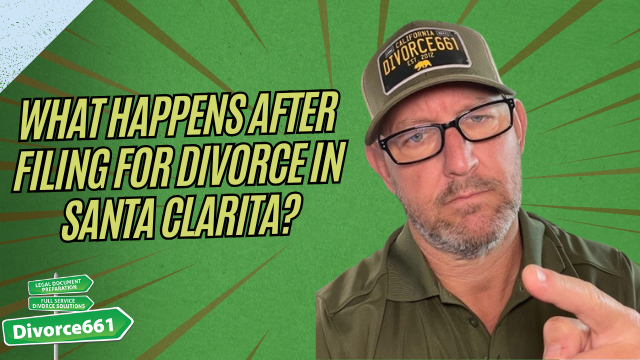What Happens After Filing for Divorce in Santa Clarita?
Just filed for divorce in Santa Clarita or about to file? It is normal to feel uncertain about the next steps. Here is a clear, step by step guide to what happens after your petition is filed so you know what to expect and how to keep your case moving forward efficiently.
Step 1: Case Number and Filed Documents
Once the court accepts your petition, you will receive a case number and copies of your filed documents. Keep these copies in a safe place. Your case number is how the court and everyone involved will identify your matter going forward.
Step 2: Serving Your Spouse
After filing, the next required step is to serve your spouse with the paperwork. There are two common ways this is handled:
- Personal service: A third party delivers the paperwork to your spouse in person and completes a proof of service form for the court.
- Notice of acknowledgement and receipt: If your case is amicable, your spouse can sign a document acknowledging they received the petition. This is faster and avoids the need for formal personal service.
Proper service matters because it starts important deadlines and ensures the court recognizes your spouse has been notified.
Step 3: Exchange Financial Disclosures
Exchanging financial disclosures is a required step in every California divorce, even when both spouses agree on everything. These disclosures create transparency and help the court evaluate any agreements later on. Typical disclosures include:
- Income statements such as pay stubs and tax returns
- Account balances for bank accounts and retirement accounts
- Property and real estate information
- Outstanding debts and credit information
- Monthly expenses and budgets
Exchanging these documents early prevents delays and reduces the risk of disputes later in the process.
Step 4: Preparing Settlement Agreement and Judgment Paperwork
If your divorce is uncontested, you can begin preparing a settlement agreement and the judgment paperwork as soon as disclosures are exchanged. The settlement agreement outlines how you and your spouse will divide assets, handle debts, arrange custody and support if applicable, and any other terms you agree on.
Once you sign a settlement agreement, it is submitted to the court along with the judgment. The court reviews the paperwork and, when everything is in order, will finalize the divorce without a contested hearing.
Timeline and Avoiding Court Appearances
Timeline varies by case, but uncontested matters that are handled efficiently can be finalized quickly. For example, a recent Santa Clarita couple completed service, disclosures, and filed their judgment paperwork within two weeks and did not have to appear in court. That kind of speed is possible when both parties cooperate and the paperwork is accurate.
Common ways to keep the process fast and avoid court appearances:
- Use a notice of acknowledgement and receipt when the case is amicable
- Exchange complete financial disclosures promptly
- Work with a full service provider who handles filing and court paperwork
- Review settlement documents carefully before filing to avoid corrections
What a Full Service Process Can Look Like
A full service approach typically includes handling service of process, preparing and exchanging disclosures, drafting the settlement agreement, and filing the final judgment documents with the court. Using a provider that offers remote support and flat fee pricing can streamline the process and reduce stress.
Checklist: Documents and Actions to Prepare Right After Filing
- Save copies of your filed petition and the court case number
- Decide how you will serve your spouse and arrange service
- Gather financial documents for disclosure: pay stubs, tax returns, bank statements, retirement statements, property deeds, and debt records
- Discuss settlement options and begin drafting agreement terms if the case is uncontested
- Confirm any deadlines with the court or your service provider
Need Help Moving Forward?
If you filed for divorce in Santa Clarita and want help with the next steps, consider a full service, flat fee option that handles service, disclosures, and filing your final paperwork. A guided process can keep your case moving without delays or surprise court appearances.
We handle every step from service to disclosures to filing your final paperwork so your divorce can be finalized efficiently and stress free.
Visit divorce661.com to schedule a free consultation and learn how to get your case finalized as smoothly as possible.










